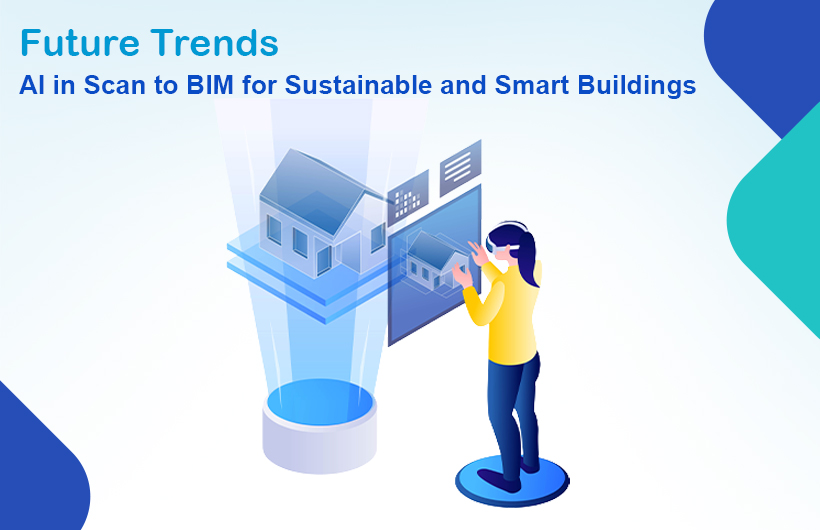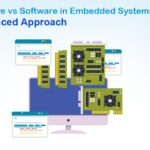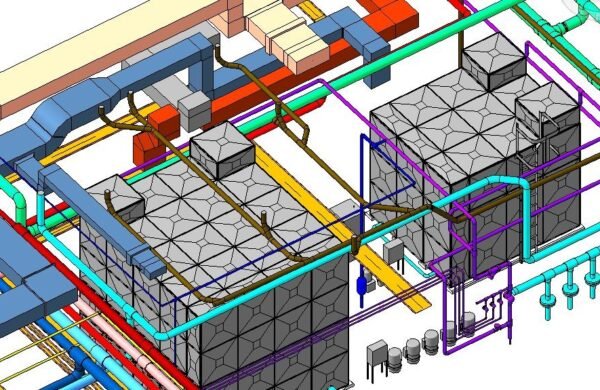As the world embraces smarter and greener construction solutions, the integration of Artificial Intelligence (AI) with Scan to BIM (Building Information Modelling) is shaping the future of architecture and construction. This innovative combination enhances accuracy, reduces waste, and promotes sustainable building management. With the global demand for eco-friendly infrastructure growing rapidly, technologies like AI-driven BIM are helping architects, engineers, and construction professionals create smarter, more efficient structures.
Companies like Monarch Innovation are at the forefront of this transformation, delivering advanced Architectural BIM services that use AI and 3D scanning to design intelligent and sustainable buildings for the future.
What Is Scan to BIM and Why Does It Matter?
Scan to BIM is the process of converting real-world building data into an accurate 3D digital model using laser scanning or photogrammetry. The scans capture millions of data points known as point clouds that represent every detail of the structure. These data points are then processed and modelled in BIM software to create a precise digital representation of the physical space.
This process has become essential for renovation, restoration, and maintenance projects, as it allows professionals to understand the existing conditions of a site before starting any construction work. When AI technologies are integrated into Scan to BIM, the entire process becomes faster, more accurate, and less labour-intensive, saving both time and resources.
How Is AI Transforming the Scan to BIM Process?
AI is redefining the construction industry by automating complex processes and improving decision-making. When applied to Scan to BIM, AI-powered algorithms can analyse vast amounts of point cloud data, detect patterns, and identify structural components like walls, windows, and columns automatically.
Here’s how AI is transforming the BIM landscape:
1. Automated Object Recognition
AI tools can automatically classify and label building components from scanned data, reducing the need for manual modelling. This saves countless hours and minimises human error.
2. Improved Data Accuracy
Traditional modelling methods often miss small details or require manual verification. AI algorithms can process large datasets with extreme precision, ensuring accurate digital twins.
3. Predictive Analysis for Maintenance
AI integrated with BIM can predict when a component might fail or require maintenance, enabling proactive facility management and extending building lifespan.
4. Optimised Design and Energy Efficiency
AI-driven BIM can simulate building performance, helping architects and engineers design more energy-efficient layouts. This supports sustainable building management by reducing energy consumption and carbon emissions.
5. Enhanced Collaboration
By combining AI and BIM, companies can deliver smarter designs, efficient workflows, and more sustainable outcomes, a philosophy strongly reflected in Monarch Innovation’s approach to digital construction solutions.
How Does AI in Scan to BIM Support Sustainable Building Management?
Sustainability is at the heart of modern architecture. The integration of AI into Scan to BIM technology is driving a major shift toward sustainable building management by optimising resource usage and improving operational efficiency.
1. Energy Optimisation
AI can analyse BIM models to evaluate energy performance, lighting efficiency, and ventilation. This helps identify areas for improvement and guides the use of renewable energy systems.
2. Reduced Waste and Rework
Accurate 3D models created through AI-based Scan to BIM reduce the chances of design errors, minimising construction waste and unnecessary material use.
3. Lifecycle Assessment
AI allows continuous monitoring of building systems through sensors and BIM data integration. It helps assess the building’s lifecycle, ensuring sustainable operations from construction to maintenance.
4. Smarter Facility Management
Integrating AI with BIM creates digital twins, real-time digital representations of physical buildings. These help in monitoring energy use, predicting system failures, and scheduling preventive maintenance.
With such advancements, the construction industry is transitioning from reactive maintenance to proactive, data-driven management, aligning perfectly with global sustainability goals.
What Are the Future Trends in AI and BIM Integration?
The fusion of AI and BIM continues to evolve rapidly. Here are some promising AI BIM future trends that will shape the next generation of smart building technology:
1. Generative Design and Automation
As these trends continue, Monarch Innovation remains dedicated to integrating the latest AI and BIM technologies into its Architectural BIM services, offering clients futuristic solutions that combine precision, sustainability, and innovation.
2. Digital Twins and Real-Time Monitoring
As sensor technology improves, real-time data from buildings can be fed back into BIM models, creating dynamic digital twins. These twins will be essential for continuous optimisation and predictive maintenance.
3. AI-Powered Construction Planning
AI will enhance scheduling and resource allocation, predict delays, optimise manpower, and improve safety protocols on construction sites.
4. Integration with IoT and Smart Devices
AI and BIM will increasingly work alongside the Internet of Things (IoT) to make buildings self-regulating. For example, sensors can adjust temperature, lighting, or ventilation automatically to maintain energy efficiency.
5. Cloud-Based Collaboration and Data Management
Future BIM platforms will rely heavily on cloud technology, enabling seamless collaboration across disciplines and geographies. AI will help manage this data efficiently and extract actionable insights for project success.
Why Should Businesses Invest in AI-Driven Scan to BIM Now?
Adopting AI in Scan to BIM is not just a technological upgrade; it’s a strategic investment. Companies that embrace these tools early gain a significant competitive edge. Here’s why:
- Faster project completion: Automation speeds up modelling and reduces manual effort.
- Higher accuracy: AI minimises human errors, ensuring precise as-built documentation.
- Cost savings: Efficient planning and predictive maintenance lower long-term operational costs.
- Sustainability goals: Optimised designs reduce energy consumption and environmental impact.
The construction landscape is moving toward data-driven intelligence, and businesses that adapt today will lead tomorrow’s smart building technology revolution.
Conclusion
The integration of AI in Scan to BIM marks a turning point in the way we design, construct, and manage buildings. It enables a seamless blend of innovation, efficiency, and sustainability, key ingredients for the future of construction. By harnessing the power of AI, architects and engineers can create smart, sustainable buildings that are not only efficient to build but also easier to manage throughout their lifecycle.
Monarch Innovation continues to lead this digital revolution by offering cutting-edge Architectural BIM services that transform ideas into intelligent structures. With AI-powered solutions driving accuracy and sustainability, the future of construction is indeed smarter, greener, and more efficient than ever before.





